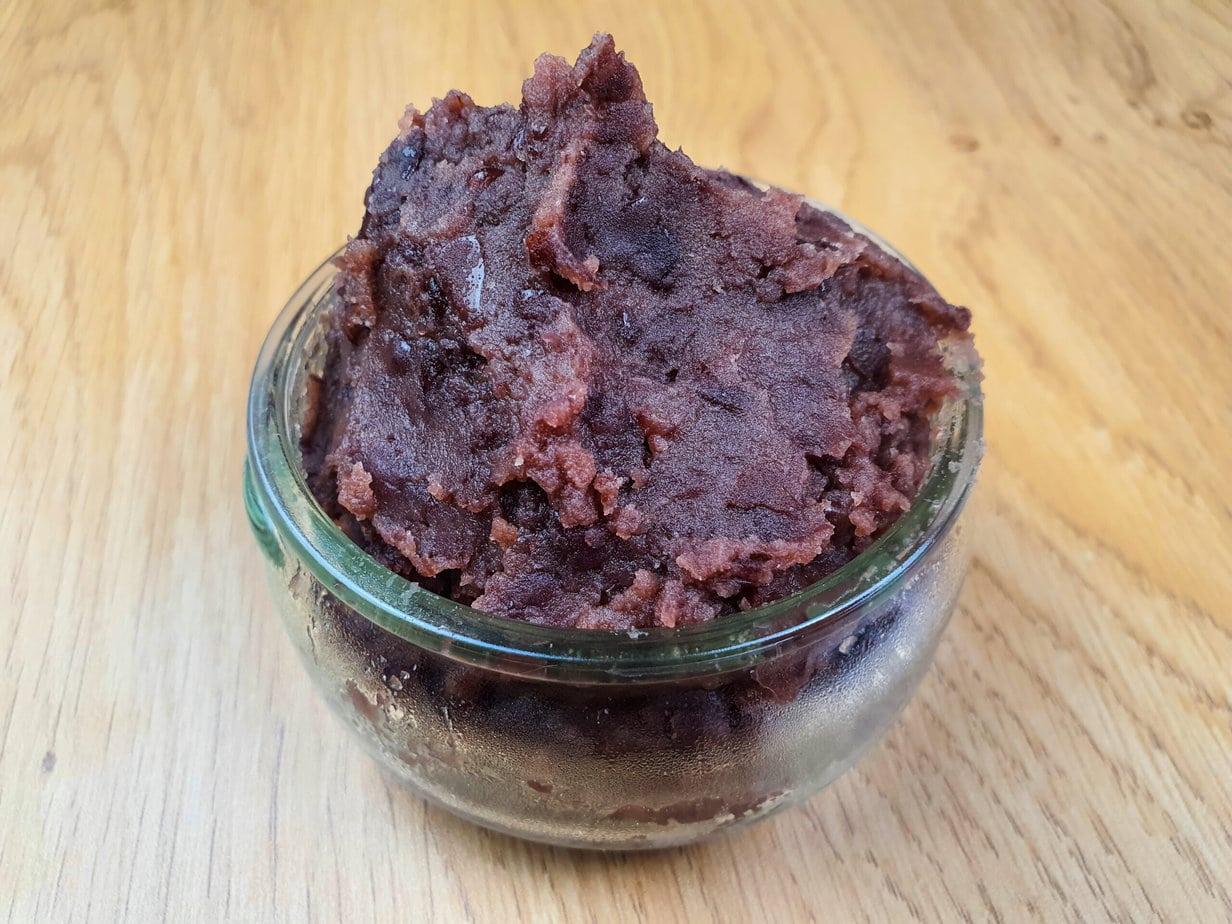
Easy Sweet Red Bean Paste (Anko)
An easy, authentic recipe for classic Japanese sweet red bean paste
Print Recipe
Pinner la recette
Servings: 1 portions
Calories: 300kcal
Ingredients
- 200 g dried azuki beans
- 1 L water
- 200 g granulated sugar
- 0.25 fine sea salt
Procédé
- Gather all of your ingredients.
- Rinse the azuki beans, discarding any that are broken.
- Place the drained beans in a large pot and add water until they are submerged by 2–4 cm (1–2 in).
- Set the pot over medium-high heat and bring the water to a boil.
- Once boiling, pour the beans into a fine-mesh strainer, then return them to the pot.
- Add fresh water so the beans are again covered by 2–4 cm (1–2 in).
- Bring the pot back to a boil over medium-high heat. When it starts bubbling, lay an otoshibuta (drop lid) directly on the surface to keep the beans from bouncing around. Reduce the heat to medium-low and simmer for 1–1½ hours.
- As the water evaporates, top it up as needed to keep the beans submerged. After about 1 hour, pinch a bean between your fingers; if it squashes easily, they are done.
Tsubuan (chunky red bean paste)
- Drain the cooked beans in a colander.
- Return them to the pot, set over medium-low heat, and stir in half of the sugar.
- Stir until the sugar dissolves, then add the rest.
- Keep stirring until everything is well combined, then add the salt.
- If you're making Zenzai (Oshiruko), the paste is ready to use now. For a thicker spread, continue cooking to reduce it further.
- Cook until most of the moisture evaporates. When you can drag a spatula across the bottom of the pot and the line holds, turn off the heat. It will look slightly loose but will firm up as it cools. Spread the anko on a rimmed tray to cool completely. Your tsubuan is ready.
Koshian (smooth red bean paste)
- Drain the beans in a colander, reserving a little of the cooking liquid.
- Move the beans to a blender, add 1–2 tablespoons of the reserved liquid if necessary, and blend until silky smooth.
- Return the puree to the pot, set over medium-low heat, and stir in half of the sugar.
- Stir until the sugar dissolves, then add the remaining sugar.
- Cook, stirring constantly, until some of the moisture cooks off. Add the salt and mix well.
- When a spatula dragged across the bottom leaves a clear trail, remove from the heat. The paste will thicken as it cools. Spread the koshian on a tray to cool completely—it’s now ready to enjoy.
Notes
Store in the refrigerator for 3–4 days.
n
Wondering why we boil and drain the beans twice? The process removes their natural bitterness, known as shibumi (渋み) in Japanese.
n
Nutrition
Calories: 300kcal
As-tu réalisé cette recette ?Tague @marcwiner sur Instagram !